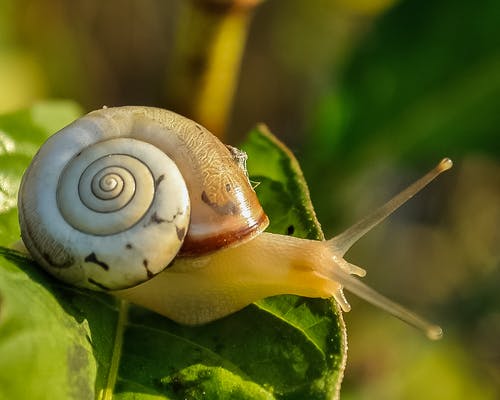
By George Munene
African Birds Eye chilli farming for the export market is as profitable a farming venture as you will find. Despite this, it remains untapped with supply hardly scratching the surface of market demand.
“We have had to unfortunately turn down many African Birds Eye chilli exporters; one was seeking 7,000kgs of ABE which we could not scramble enough of in time, another, a weekly supply of 2,000Kgs we did not dare to take on. The existing pool of ABE chilli farmers is not enough to sustain export demands,” says Mkulima Smarter’s George Wambugu.
Wambugu is working with farmers from across the country to build their capacity to ensure they have the quantities and quality required for the export market. Dried chillies need to be whole and unbroken with moisture content of less than 12.5%. Sun-drying chillies lowers their capsaicin levels making their powder less hot and also bleaches out their red colour. For these reasons, shade dried chillies fetch a better price; about Sh250 to Sh200 gotten from ones that are sun-dried.
Related News: Chilli exporters eyeing the Middle East to compensate Europe market
Related News: FarmBiz TV:Kiboko farmer finds fortunes in Bird’s Eye chilli,vows not to plant anything else.
The yielding potential varies depending on management, location and season from between 1,000 kg to 4,000 kg per acre every year. Well managed plants should be able to yield at least 600 grams of fresh chilli per plant per year or 200 grams of dried chilli.
African Birds Eye Chilli thrives in various regions, preferring a 20⁰C to 30⁰C temperature range. Temperature below 16⁰C and above 32⁰C hinder fruiting in chilies. They thrive in light loamy well-drained organic soils. PH levels of 6.0 to 6.5 are optimum although they can tolerate a wide PH range; 4.3 to 9.7. They are hardy but are occasionally affected by thrips, mites, aphids and whiteflies. Fungi such as downy mildew and powdery mildew also affect the crop.
Wambugu explains, “It is important to note that the quality of seeds ruins most of the ABE chilli produced locally which do not pass the quality test demanded by most bulk buyers. This is partly caused by genetic contamination and continuous inbreeding and cross-pollinating with other varieties of chilli and/or chilli related crops. Unfortunately. there is no local agrovet outlet that sells certified ABE chili seeds within the region, we have to get indigenous imports from South Africa. 4,400 seeds suited to planting an acre go for between Sh25,000 and Sh20,000.”
He advices farmers to start small, preferably on about 1/8 or 1/4 an acre they can easily manage as they learn the ropes on the crop’s maintenance. With the right agronomic expertise and experience, one can do as much as 20,000 seedlings for an acre.
Related News:Tana River farmer who produces 30 tonnes of chilli a season, in need of contractors to grow more
Planting Requirements
Chillies should be established on a nursery bed. The seed rate can be about 75g/acre
Nursery site selection:
- The nursery should be sited on a plot where a member of Solanaceae plant family (tomato, potato, peppers, eggplants) has not been planted for at least three years. If this is impossible, proper soil fumigation should be conducted.
- The chosen site should have rich, well-drained, friable soils
- Choose an area near a water source and protected from animals
Nursery establishment:
Seedling trays are recommended, especially for expensive hybrid seeds, as they offer more uniform germination and growth.
- The bed should be 1M in width by any desired length
- The soil should be finely tilled
- Mix soil with10–15kg of manure per square meter
- Sow the seeds 1.5cm deep in holes and at a spacing of 15–20cm apart
- Cover the bed with mulch and water thoroughly
Management of nursery:
- Water once a day. Where possible, check soil moisture before watering
- As soon as seeds start germinating, remove mulch and create a temporary shade above the seedbed of about 50 per cent, using a shade net or grass mulch
- Monitor for disease and pests regularly
- Germination is complete after one to three weeks
- Seedlings should be hardened off in the fourth and fifth week after emergence by reducing shade and a watering frequency of three times per week
Transplanting
- Seedling transplanting should be done five to six weeks after emergence (four to six-leaf stage)
- Transplanting should be done at the beginning of the rainy season to give seedlings a good start
- Water nursery beds before lifting the seedlings with a ball of soil around their roots
- Plant seedlings when temperatures are low
Recommended planting spacing
Spacing of 60 by 30cm or 70X30cm are recommended depending on the variety
Write comment (0 Comments)



 In 2007, Rosemary Odinga, the daughter of former Prime Minister Raila Odinga was the only snail farmer licensed by the Kenya Wildlife Service (KWS) to raise the slimy creatures. However, the venture has been on the rise among Kenyan farmers due to increasing demand brought about by the influx of West African and Asian nationals into the country who find snails a common delicacy.
In 2007, Rosemary Odinga, the daughter of former Prime Minister Raila Odinga was the only snail farmer licensed by the Kenya Wildlife Service (KWS) to raise the slimy creatures. However, the venture has been on the rise among Kenyan farmers due to increasing demand brought about by the influx of West African and Asian nationals into the country who find snails a common delicacy.












